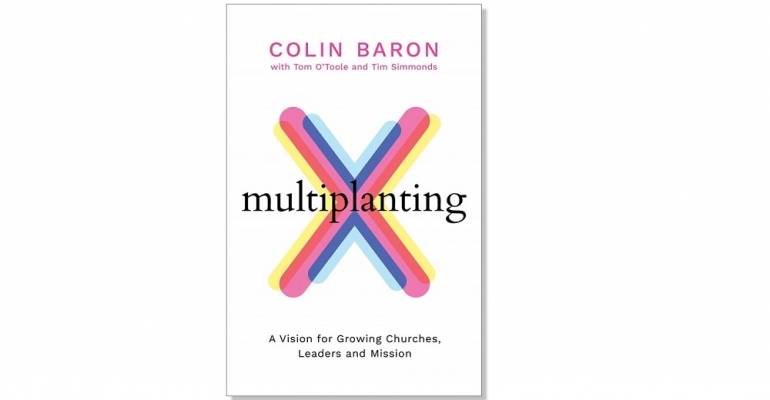
Multiplanting – A Review
Multiplanting is Colin’s name for the style of multisite church planting that he has developed over the past decade or so in Manchester. Like most other concepts of multisite church, Christ Church Manchester (CCM) is “one church with a central strategy, culture and approach” (p36), with Sunday gatherings in different places – sites – across the city. Where it differs, though, is that instead of having one teaching plan, with the preachers haring back and forth across town (or being beamed electronically into the different sites), “each site determines and delivers teaching and music locally”. The sites are also “genuinely empowered to find effective ways of reaching their own local community”, meaning that everything from the type of venue, and the kind of snacks served before each service to the whole feel of the service will feel very different at one site than it does at another.
Although I didn’t agree with everything in this book, there was lots that I loved. Having been part of churches of many different sizes over the years, I have found that congregations of between about 60 and 120 seem to be about the right size to have (just) enough volunteers without losing the sense of being a family where everyone can be known (to the extent they want to) and everyone is needed. The multiplanting model allows for this, and enables a church to be in and for many different areas of the city, while retaining the support, resources and efficiencies of scale that go along with a larger leadership team. (Without the drain on the leaders involved in preaching at several sites each week etc.)
As a non-church planter, while I found the structural/management stuff interesting, the section on church culture that Colin describes in the seven chapters of Part Two was more personally relevant and interesting. He paints a picture of a church that is joyful and welcoming, with strong cultural values such as ‘A Second Chance Culture’, ‘A Generous Culture’, ‘A Good Food Culture’ and more. The impression is of a church where everyone is encouraged and empowered to ‘have a go’ (indeed, that is one of the chapter headings) at whatever they think God is calling them to, and picked up, encouraged, and helped to try again if things go wrong. I liked the sense that the church is one in which newcomers’ gifts can quickly be identified, encouraged and developed. Even better – putting my Jubilee+ Church for the Poor hat on for a moment – I got the impression that it is agile and entrepreneurial enough to give those whose gifts don’t necessarily show themselves in the traditional white-middle-class ways a chance to also participate and excel. The church leaders seem to be actively on the look out for gifting in the congregation and calling it out and raising it up. I love that.
That said, it may just be my natural caution or aversion to change, but it did feel, reading the book, as though the drive to pioneer and start new things might perhaps come at the cost of depth of relationship and discipleship. It’s a tough balance, because it is good to be intentionally identifying, investing in and developing new leaders, and you want to give people opportunities to grow and flourish, it just all felt as though it happened very quickly at CCM.
I was also left wondering at what point, if at all, a site would become its own church and separate from the central leadership team. Colin talks a lot about his vision to plant 20 churches, but is currently counting his sites in that number. There must surely come a point when this centralised leadership team - including an elder from every site - becomes too unwieldy to function, and a point when the sites become mature enough that they both could and should be released to stand on their own two feet, but unless I missed it, that isn’t discussed in the book.
Another hesitation in my wholehearted endorsement of the book would be around who gets to preach on a Sunday. I’ve been involved in various discussions on twitter and in real life about this in recent weeks, and they have served to consolidate my position that the Sunday sermon ought – in the vast majority of cases – to be delivered by an elder or someone who is clearly on the road of exploring eldership. (The exceptional cases might include, for example, other elders from within our network or denomination, or perhaps missionaries home on furlough sharing updates and testimonies about their work.) And as a good complementarian, of course, I would also include the qualification that someone teaching the Word must be male. In Colin’s ‘Have a Go Culture’ (and in his theology), none of those are requirements. This of course gives opportunities to many more people, and eases the burden on the elders, but is a different philosophy of what Sundays are about and what preaching is for than I believe to be consistent with Scripture.
With those caveats in place, though, there is a lot I would commend in this book. Whether you’re a church planter or simply someone who has a measure of influence over the culture of a church (which, one way or another, for good or ill, is most of us), I think you’ll find it an easy but interesting read with lots of food for thought.
Available now from Hive and all good booksellers!